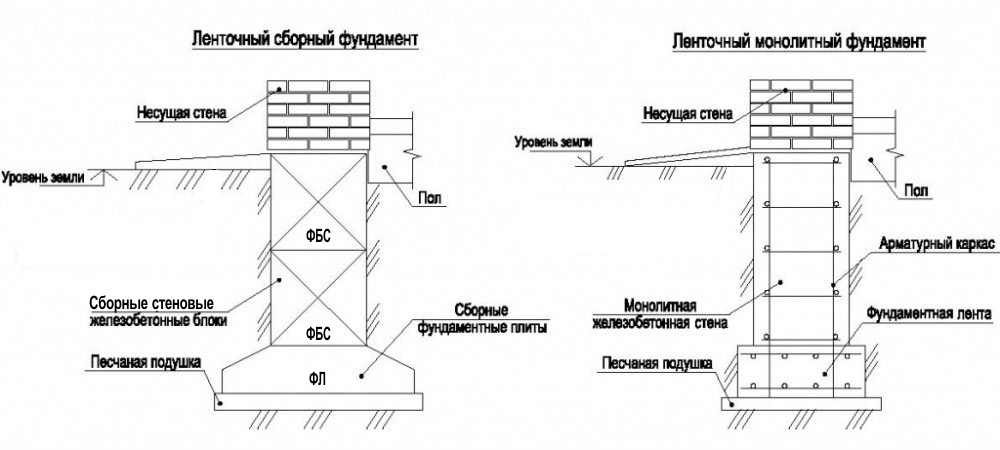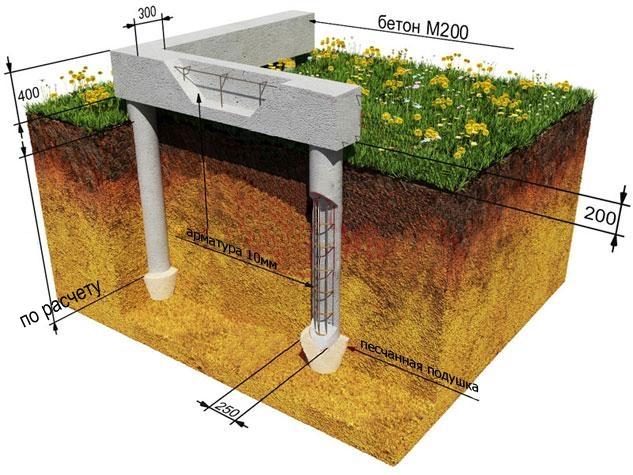There are several types of them; it is not easy to choose, and there are millions of opinions on the web.
What are they like? And how much are? Consider an example – a house of simple form, 10 x 10 m, without a basement. The price is very approximate, according to experience, only for the foundation itself (without preparatory work), and only for the Kiev region, Ukraine.
So, the easiest to install and the most inexpensive (10 thousand evergreens) is a strip foundation from blocks (left picture). The finished blocks are mounted with a crane for a maximum of a couple of days, a monolithic belt is made (or a monolithic sole) – and it is ready. Another plus of this type is factory quality.
A bit more expensive and longer in operation is a solid monolithic foundation (the picture on the right) – walls and soles of monolithic reinforced concrete, and with the same initial data it requires more labor and money (15 thousand), and also time (week from start to scrapping ).
It happens, a monolithic slab is required as a foundation, it costs even more, and it will take more time to tie the reinforcement. Thousands of 25 – 35 on the slab along with the walls (if they are from prefabricated blocks, left picture), and a week – two times for formwork, rebar binding and concrete hardening.
Sometimes it is necessary to use monolithic walls with the same slab (right picture), and this is plus 3–5 thousand on the walls and another week of time (making formwork, knitting reinforcement).
The most expensive and long – foundation of reinforced concrete piles (driven, bored, etc.). For our example home, these are piles of 40–50, i.e., 50–80 thousand of money, depending on a number of factors. Plus, a month and a half to wait until the beginning of the next stage of work (a fortnight on the piles and a month on the readiness of the test piles for testing).
There are also columnar foundations (for light, frame houses), there are screw piles (also for light houses, but also with a limited service life) – but we do not consider them here as unsuitable for the houses we design.
Here they are different. Each – for some situation, in proportion to her. For trouble-free soils – tape teams, for subsiding soils – tape monolithic or slab (depending on the design of the house), for heavily subsiding soils or for landslides on the slope – piles.
You can, of course, be safe from harm’s way, and where there is enough strip foundations, pour the concrete slab, abundantly stuffing it with reinforcement – but if we have ordinary sands to a depth of 8 meters below the house, then these 30 thousand can probably be used with greater benefit. After all, the measure of the adequacy of the foundation is known – there are norms of calculation, and you can choose the type of foundation not according to the degree of “coolness”, but based on the quality of the soil and the load on the foundation.
This is already discussed in another article – on soils, or rather, on geology – what is “better” in relation to soils and the foundation.






